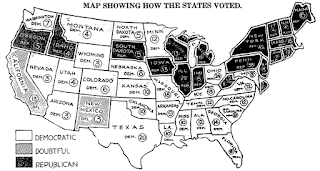On July 11, 1945, you didn’t have to go far to find a
wild west adventure in our town! About 4 a.m. at Ben-Hur Packing Company, 802
Covington Street, fourteen bulls escaped from their enclosures and roamed the
streets of Crawfordsville! Boy, howdy,
that must have been some round up! By
noon almost all the bulls had been captured, except for three who continued to
wander up and down streets and alleyways of the northwest quadrant of the city.
Imagine turning down Cherry Street from West Market and staring into the face
of a crazed loose bull! Just before noon
that day, Officer Paul Branagin and some packing plant workers found one bull in the backyard of a house on Cherry Street.
He had his gun, but allowed one of the workers to kill the loose bull. One bull
managed to get as far as Vance Street between Main and Market Streets!
 |
| Officer Branagin |
Harley Cunningham, a local pilot, used his flying skills
to help locate strays in the vicinity of the packing plant. It was feared that the livestock had strayed
east over the creek, or as far as Oak Hill Cemetery.
The excitement was over just after noon as most of the
bulls were corralled blocks away from the plant and later transported back
there to meet their fate.
Jennings B. Miller and Sam Harris were the managers of
the plant, which later became known as the Sam Harris Packing Company.












































